First ride: Kawasaki Z900RS review
A retro bike that recreates a motorcycle we actually remember. But does the Z900RS go as good as it looks?
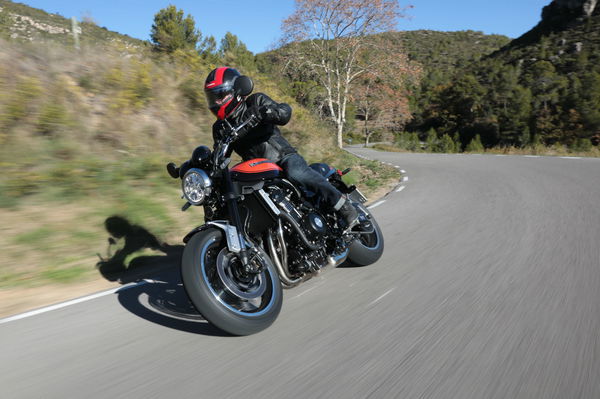
KAWASAKI’S Z900RS must be one of the most talked-about new motorcycles for 2018.
It’s based on the Z900 but it’s been redesigned to the extent you wouldn’t recognise it, with styling inspired by the Z1 of the 1970s.
We’ve been posting about it on Facebook and Twitter for the last couple of days and it seems you can’t get enough of it. There’s hardly a dissenting voice among the appreciative comments.
You like this bike, evidently. Having just spent a couple of days riding it at the launch in Barcelona, so do I. Let me tell you why…
Engine
It’s the 948cc in-line-four from the Z900 but detuned. Instead of 125hp, it now makes a claimed 111hp, while peak torque is down very slightly, from 72.7lbft to 72.6lbft. And it makes those peaks lower in the range: power at 8,500rpm instead of 9,500 and torque at 6,500 instead of 7,700.
What you get in return for those sacrificed 14 horses is an engine that pulls more strongly below 7,000rpm, according to Kawasaki. That seems to be the case, with lots of immediate torque on opening the throttle.
Meanwhile first gear has been shortened to ‘facilitate moving off from a stop,’ the firm says. It definitely does that. Bearing in mind the Z900 already has an engine tuned for good low-to-mid-range torque, the Z900RS initially feels quite aggressive in first gear, taking a little bit of wrist recalibration to adjust to the acceleration unleashed by a small turn.
Even in third, it pulls enthusiastically from about 2,000rpm, making for a healthy muscle-bike feel.
The initial throttle response is ever so slightly on/off. When you try to hold a constant low throttle through a corner, there’s a tendency for it to shut off and then reopen with a jerk. It seems to be a common problem on late motorcycles, no doubt related to the challenge of meeting ever tightening emission limits. The Z900RS has a mild case of it, not half as bad as some others I could list. Suzuki GSX-S1000.

It rewards taking corners in one gear higher than you might choose for optimum drive out of the turn. The initial throttle response is smoothed out, eliminating that jerk. And the low-down torque means it still picks up quickly as the road straightens.
There’s a good top-end too, as you would expect from an in-line-four, as it surges linearly to its peak at 8,500rpm and beyond towards the 10,000rpm red line.
Kawasaki say it’s got the first exhaust system they’ve ever tuned specifically to make it sound good. It does sound good. It wouldn’t make you think, ‘Wow, that’s been tuned specifically to sound good.’ It seems to me like the sound a four-cylinder Kawasaki, perhaps with a slightly deeper rumble than usual at low revs.
As well as shortening first gear, they’ve lengthened sixth to reduce vibes at motorway speeds. At 70mph it’s at around 4,500rpm. There’s just a very faint vibe through the bars. It’s pretty smooth, though.
Handling
The Z900’s frame has been redesigned for its new role. The tubes extending to the headstock are closer together to allow for the new teardrop-shaped tank.
The subframe has been adapted to make for a more horizontal rider and pillion seat and the tubes supporting it widened to provide for the additional stress that creates.
The result is ‘fundamentally different’ to the Z900’s chassis, Kawasaki stressed in a presentation before the ride. But of course, it’s still tubular steel, using the engine as a stressed member through five rigid mounting points. So fundamentally the same arrangement, you might argue.
And there’s nothing wrong with that. It’s presumably what we have to thank for the Z900RS retaining the easy, confidence-inspiring handling of the Z900. It’s stable, reassuring in corners, while compliant and precise as you tip in and out of them on the Dunlop Sportmax tyres.
The riding position has changed. Where the Z900 puts you slightly hunched forward over the bars, in the manner typical of a super-naked, the Z900RS is more upright. It’s not bolt-upright – and not as upright as the original Z1 that Kawasaki brought along for display purposes, which I sat on briefly when no one was looking.
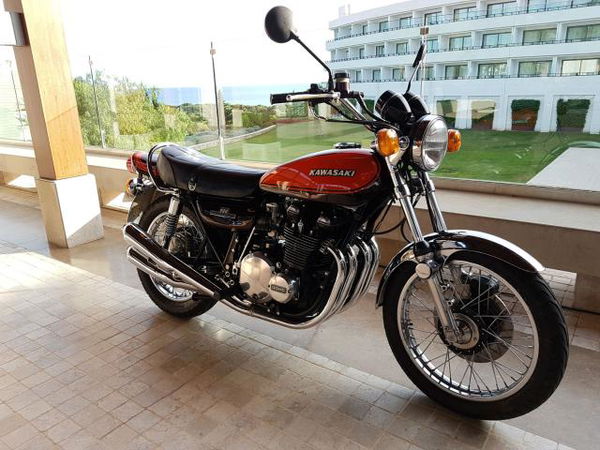
The new bike is relaxed, with a very slight reach forward to the high-ish bars.
With the subframe alterations, the seat has risen from 790 to 835mm. It’s higher than I might have expected. I’m 5’9” and could get both feet flat on the ground but only with legs fully straightened. It’s not tall, just taller than is probably typical of a retro roadster. An optional lower seat reduces the height to 800mm.
Suspension
‘Why doesn’t it have twin shocks?’ seems to be a recurring question on Visordown’s Facebook page, along with ‘Why doesn’t it have right-way-up forks?’ and ‘Why doesn’t it have a four-into-four exhaust?’
Kawasaki’s explanation for it not inheriting these features of the original Z1 was this: we wanted it to handle.
Norikazu Matsamura, the styling designer for the model, said in a Q&A session that he had at one point considered a twin-stacked silencer on one side but a single one was settled on for “lighter weight and better riding capability”.
On whether he’d ever considered right-way-up forks and twin shocks, his answer was an unequivocal “No”.
The bike needed to feature contemporary components for handling considerations, he added via a translator.
So, it’s on 41mm upside-down forks, adjustable for preload and compression and rebound damping, and a horizontal gas-charged shock, adjustable for preload and rebound damping.
Read those specs, consider them and then forget them. This is the kind of suspension that you do not need to think about because it does its job so well, keeping the bike poised, balanced and behaving exactly as it should at all times on twisty roads.
Together with that chassis, and that muscly engine, it makes the Z900RS a very flattering motorcycle. A motorcycle offering a favourable exchange rate of pace for riding ability. It’s easy to ride well, smoothly and fast, and what quality in a motorcycle can be more gratifying than that?
The pace of the launch ride, on beautiful, grippy, winding roads, quickened as morning stretched into afternoon, culminating in a mentally frazzling 45-minute blast from a photo stop to a late lunch, where I arrived wide-eyed, dry-mouthed and looking forward to more.
A steadier ride into the city the next day revealed the inevitable price to pay for such suspension, as the impact of speed humps was transferred with relative directness to the rider. It’s not uncomfortable but it is sporty, made more for smooth bends than potholes.
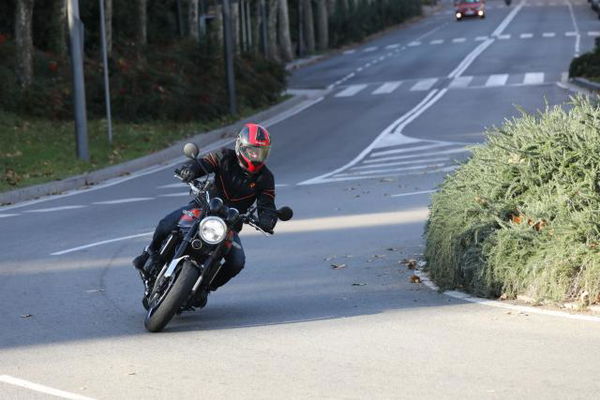
Without the same constant high demands on concentration as the previous day’s ride, the firm seat also felt a bit uncompromising after about an hour or so.
Brakes
In transforming the Z900 into the Z900RS, Kawasaki have given it some performance upgrades, one of which is to the front brake. Where the Z900 has conventional four-pot calipers, the Z900RS has new radial-mounted ones, offering superb control.
One finger on the lever is enough and when a hazard looms more suddenly than anticipated, a light increase in pressure will give you all the force you need.
At one point, the ABS activated unexpectedly, perhaps a little over-sensitively.
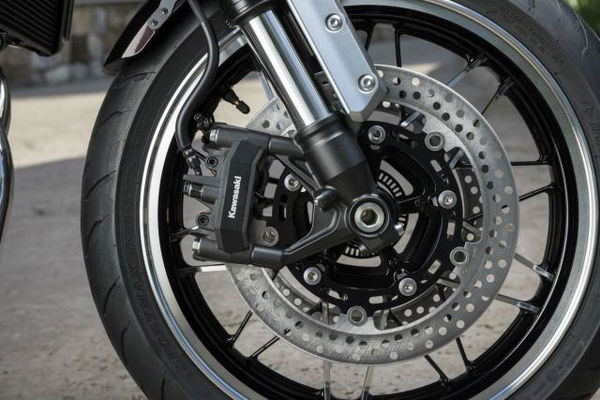
Equipment
The second performance upgrade is to rider aids. Where the Z900 doesn' really have any aside from ABS, the Z900RS has gained traction control with two alternative levels of intervention plus the option to switch it off. Like the Z900, it’s got an assist-and-slipper clutch for a lighter lever and reduced back-torque on down-shifts.
The clocks could be called basic, and that’s exactly their appeal. Glancing down from the saddle, you could for a moment believe you’re on a 1973 Z1, as you see the delicious orange and brown tank, chrome handlebar, round mirrors and those two big dials with white numbers on black.
Even the font of those digits is the same as those of the Z1, Kawasaki boasted. A close inspection reveals they’re similar but not quite the identical. The originals are slightly taller and narrower.
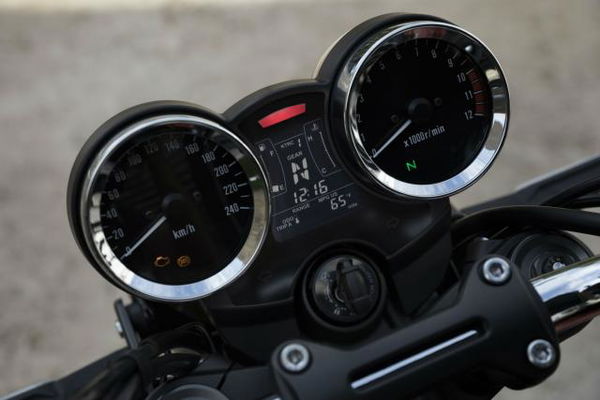
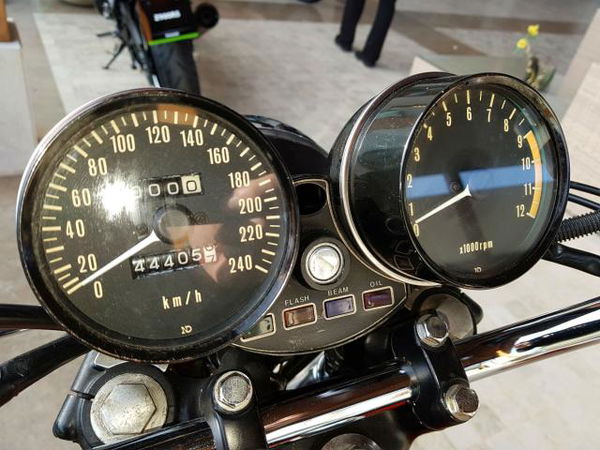
The digital display between the two clocks looks like a bit of a continuity error but gives you that information expected of a new motorcycle, including a gear indicator and average fuel consumption (46mpg after day one’s blast and 54mpg after day two’s jaunt into the city).
Those round mirrors, while effectively evoking the past, are also preferable to me to the bar-end ones often found on retro bikes, which require you to divert your eyes farther from the road ahead.
Other nice little provisions include four points that you could hook luggage straps to, for carrying things on the pillion seat. The foremost two are handsome sticky-out aluminium bobbins.
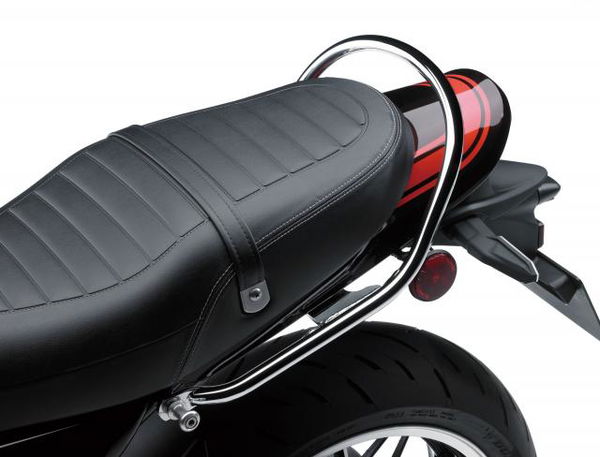
Under the seat there’s space for a disc lock (or a Kawasaki accessory D-lock).
The toolkit consists of a screwdriver and spanner slotted to the under-side of the seat. You can be sure a Z1 had (and needed) a more comprehensive set of spanners than that.
We like
That Kawasaki have made something that could unite two kinds of riders: those who like traditional motorcycles and those who like Z1s.
In other words, those persuaded by the current popularity of traditional-style bikes and those who might otherwise be retro-sceptic but for whom the Z900RS will evoke genuine, personal nostalgia because they actually remember the Z1 from their youth. Forty or 50-something riders who at some stage either had or would have liked one.
The Z900RS evokes a specific model that exists in the memory of many still-active riders, with details like its jutting-out tail unit and its new cast aluminium wheels which are supposed to (and at a glance do) resemble wire-spoked ones.
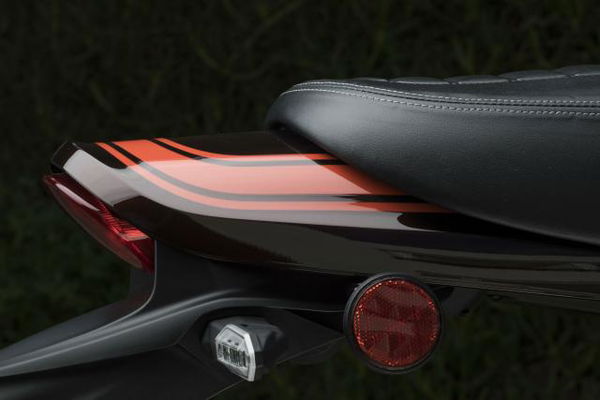
More Japanese manufacturers should do this. Compare it to the XSR range, evoking nothing from anyone’s memory, when Yamaha so well could if the firm only chose to celebrate its real heritage instead.
And, while we’re at it, the non-Japanese Triumph Thruxton R and BMW R nineT, beautiful motorcycles but more inspired by a notional bike of the past than a specific model.
We don’t like
Kawasaki loses it a bit on the Z900RS’ front mudguard. It’s got aluminium brackets, a style shared by the R nineT and Thruxton R. It’s nice but what’s it got to do with a Z1? It should be chrome, surely.
It’s as though someone thought, ‘We can’t afford that. What does the handbook of generic retro styling say?’
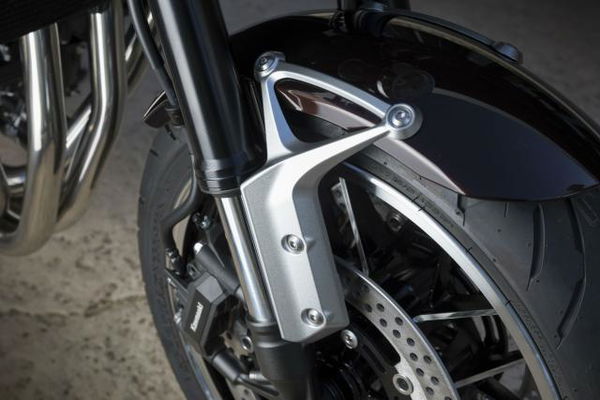
I don’t like that the colour scheme most people will probably want is also the most expensive by up to £300. The Z900RS is £9,899 in black, £10,099 in green or £10,199 in orange and brown, the colour most reminiscent of the Z1.
And it’s a shame the Z900RS Café – with café racer fairing and seat plus lower handlebars – wasn’t ready in time to also be ridden on the launch. While the Z900RS is due to go on sale next month, the Z900RS Café isn’t set to arrive in dealers until March 2018, at £10,349. So there aren’t enough available yet to hand 20 over to a pack of journalists.
Verdict
As I said at the beginning, the Z900RS receives very high levels of approval in reader comments. I can see why. The styling is exquisite. More than that, it faithfully reimagines a real bike that means somethings to many riders.
If you’re one of those riders to whom it evidently appeals, I have good news: the Z900RS is as rewarding to ride as it is to look at.
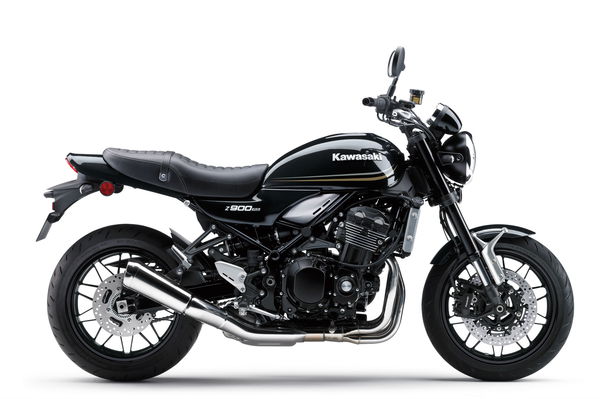
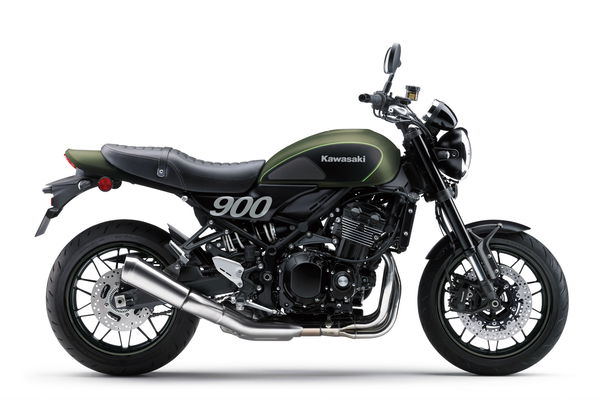
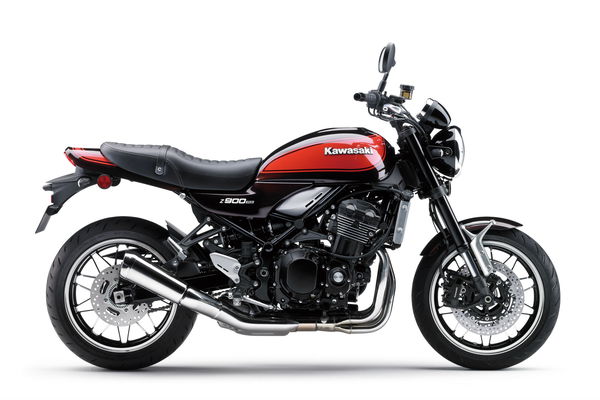

SPECIFICATIONS
Model tested: Kawasaki Z900RS
Price: £9,899 in black, £10,099 in green or £10,199 in brown/orange (Z900RS Café £10,349)
Engine: 948cc liquid-cooled in-line-four
Power: 111hp @ 8,500rpm
Torque: 72.6lbft @ 6,500rpm
Kerb weight: 215kg
Tank capacity: 17 litres
Seat height: 835mm
Availability: mid-December 2017 (Z900RS Café March 2018)











